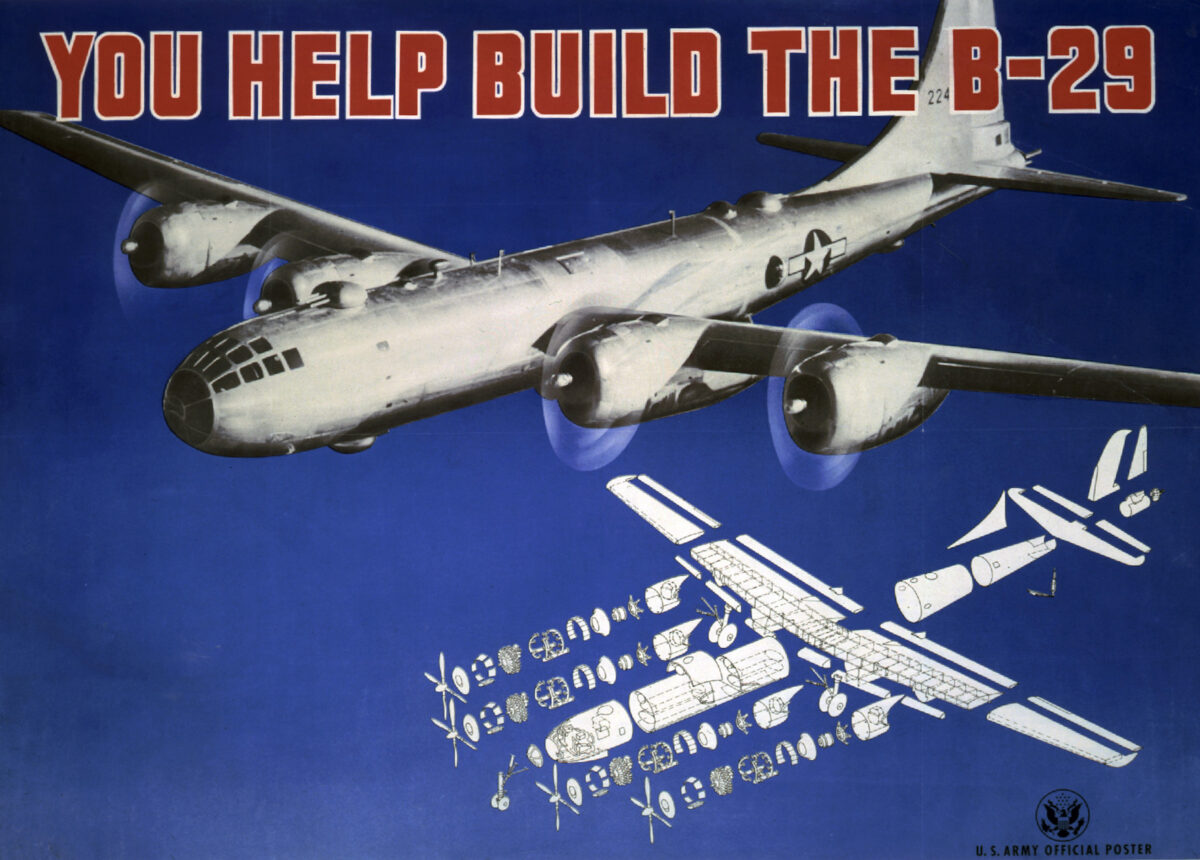The Boeing B-29 Superfortress was an immensely complicated machine — this wartime poster created by the U.S. Army hints at the size of the job required to put one together. Sixty different factories contributed the largest components for the big four-engine bombers, which were assembled in four different production facilities.
The high-tech airplane featured pressurized front and rear compartments (a pressurized tunnel connected them) and remotely operated gun turrets.
The first Superfortress, an XB-29, made its initial flight on Sept. 21, 1942, but the B-29 didn’t fly a combat mission until June 5, 1944. In-between those two dates the B-29s suffered through teething troubles, including engine fires, as well as exploding program costs that eventually reached $3 billion (more than the atomic bomb program). But the U.S. Army Air Forces pushed ahead, determined to field an airplane with the range and capabilities to bomb the Japanese homeland.
This is something the B-29 did, not only incinerating Tokyo and other cities but also dropping atomic bombs on Hiroshima and Nagasaki, helping bring the Pacific War to an end. The United States produced almost 4,000 B-29s by the time production ended in May 1946, and some of them went on to perform bombing missions over Korea.
Twenty-six B-29s survive today but only two are flyable.

